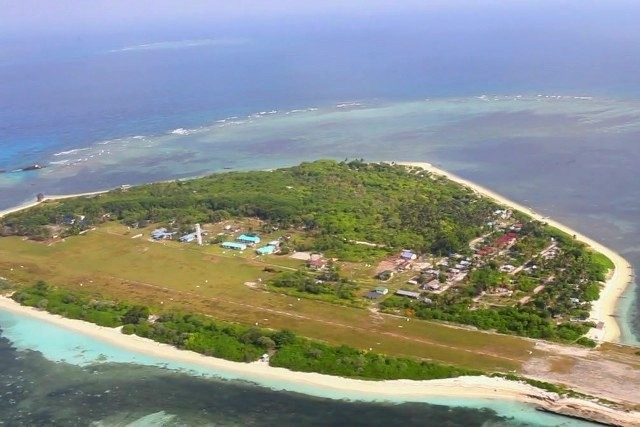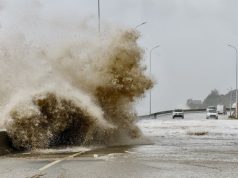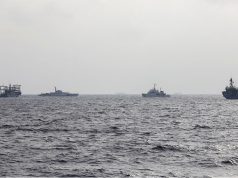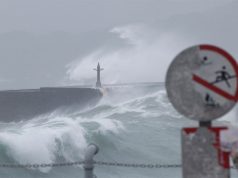US-based tech firm Simularity stood by its report of Chinese ships dumping waste in the West Philippine Sea.
The tech company defended the controversial report in response to Foreign Affairs Secretary Teodoro Locsin Jr. who cast doubt on the authenticity of its report.
In a quote-retweet on Tuesday, Locsin reacted to a reporter who sought his comment about Senate President Pro Tempore Ralph Recto’s proposal to file a diplomatic protest over the incident.
“Hi, Sen. Recto, Teddy Boy here. Report fake; GMA 7 deleted it,” he said.
“But it does happen; my aunt owned a coast line and resented ships dumping feces. She’d go out in her British crewed yacht and tell yachtsmen not ‘dump feces in my waters.’ ‘My waters.’ One woman sovereign nation,” he added.
Simularity later replied to this tweet, saying: “The imagery and algorithm we used to identify Chlorophyll-a from satellite imagery in our latest report is well researched and validated.”
It also attached a link to a report titled: “Evolution of the C2RCC Neural Network for Sentinel 2 and 3 for the Retrieval of Ocean Color Products in Normal and Extreme Optically Complex Waters.”
The imagery and algorithm we used to identify Chlorophyll-a from satellite imagery in our latest report is well researched and validated: https://t.co/FLsWHB94Cd
— Simularity (@simularity) July 13, 2021
Locsin commented on this response in a quote-retweet. He asked if the company could run the same analysis on Taal River and Laguna de Bay.
“I’m serious. I’d like you to do it as well in our rivers and our so-called beauty Taal and Labuna de Bays which I suspect are cesspools,” he said.
In response, Simularity welcomed the request.
“We would be happy to do the analysis you requested. Please contact us directly,” it said.
We would be happy to do the analysis you requested. Please contact us directly. https://t.co/rBZInoNcgF
— Simularity (@simularity) July 13, 2021
In a separate statement, Simularity said stressed that its reports are not “intended to be political.”
“Our reports are not intended to be political, but due to their topics and players involved, it’s easy to let emotions and other biases affect the way reports are interpreted,” the firm said.
“Our last report featured an image of a ship, and we gave very clear credit to the image source and we clearly stated that it was an ‘unknown ship,’” it added.
The US-based firm likewise dismissed “fake news” allegations.
“Some parties have tried to discredit us, question our analysis, and claim that our report is ‘fake news’ since the ship was photographed elsewhere – in Australia perhaps,” Simularity said.
“The purpose of the image was to provide context that illustrates the common sewage dumping practice of ships, since appreciating the ick-factor of what is happening is very difficult to do based on tiny spots on a satellite image. To be clear, we didn’t use the image in our analysis,” it added.
Simularity maintained that there is nothing fake about its research and reporting.
Simularity’s findings
Simularity’s report titled “Sewage from Anchored Ships is Damaging Spratlys Reefs” released on July 12 showed that hundreds of anchored ships in the Spratlys Islands in the West Philippine Sea had been dumping raw sewage onto the reefs for the last five years.
In a forum held by the Stratbase ADR Institute on Monday, Liz Derr, co-founder and chief executive officer of Simularity, said that the damage to the reefs had been “so intense you can see it from space.”
While Derr admitted she could not immediately verify if the ships were from China, she pointed out that “the Philippine Coast Guard has taken numerous photos of these ships since March, and they are clearly Chinese.”
“However, I can only say there is a very high probability that the ships in the images are Chinese,” she added.
In line with the questionable image, in a series of replies on Twitter, Simularity clarified anew that it never claimed the image it used was from Spratlys.
“The image in question was not used in our research. We never claimed it was from the Spratlys. It was included to provide context for what we are able to see from space, with an image credit: ‘Image source: unknown ship from Marine Executive,'” it said.
The company also stressed that its research was backed by science.
“We encourage verification of our findings by the Philippine government, and stand by our research methods, sources, and findings,” Simularity tweeted.
Government’s response
A number of senators called for action on the reported human waste disposal in the WPS, with some of them calling on the government to probe the incident.
RELATED: Not ‘Waste Philippine Sea’: Senators call for action on human waste disposal in WPS
In a message to reporters on Tuesday, Environment Undersecretary Benny Antiporda said that the department will be looking into this incident.
“On the issue of waste disposal on the West Philippine Sea, [w]e will coordinate [with the Philippine Coast Guard and the Department of National Defense] first on the authenticity of the allegation,” Antiporda said.
“[A]fter that we will b[e] seeking for the attention of the Chinese [government through our Department of Foreign Affairs].We will also validate if indeed [these] are [C]hinese vessels,” he added.
Defense Secretary Delfin Lorenzana, meanwhile, criticized the firm for its report, saying that its conclusion was only based on satellite imagery.
Lorenzana also slammed the image used in its report, which was a stock photo of the Australian Great Barrier Reef in 2014.
He also ordered the military to investigate the report.
READ: Philippines to probe report of Chinese sewage-dumping at sea










